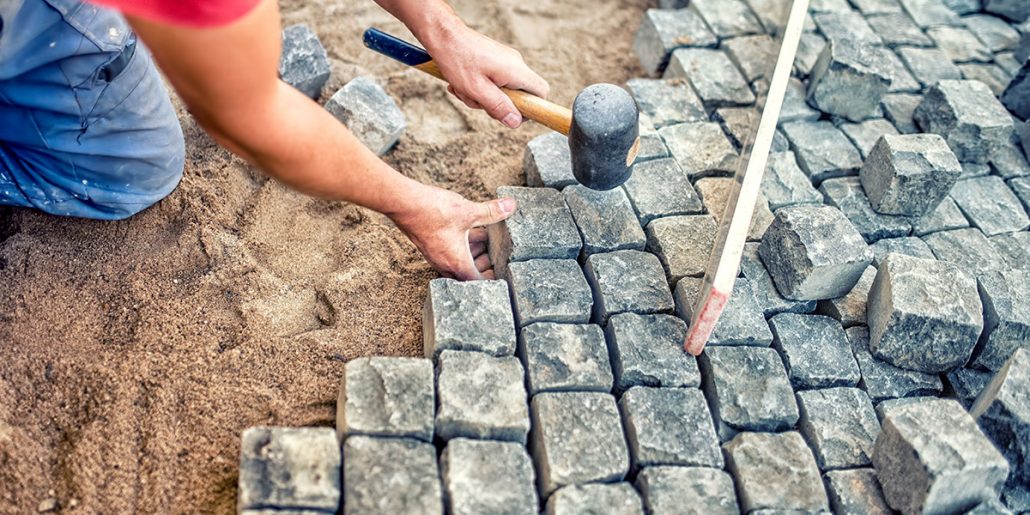Professional Masonry Contractor Services: Boost Your Home Today
Professional Masonry Contractor Services: Boost Your Home Today
Blog Article
Unlocking the Secrets of Lasting Masonry Building Practices for Eco-Friendly Buildings
In the realm of modern-day building, the pursuit of lasting methods has come to be critical. Amongst the myriad techniques to environment-friendly building, lasting stonework building and construction stands apart as a tried and true and long lasting approach that holds a wide range of untapped potential. From the choice of materials to cutting-edge building and construction techniques, the tricks to accomplishing sustainability within stonework construction are complex and fascinating. By exploring the benefits, products, strategies, and future fads of lasting stonework, a much deeper understanding of just how these techniques can form the future of eco-friendly buildings emerges.
Advantages of Lasting Masonry Building And Construction
Welcoming sustainable masonry construction techniques not just decreases ecological influence but likewise supplies lasting economic benefits to home builders and areas. By utilizing materials like recycled bricks, obstructs, and rocks, builders can substantially lower the carbon impact of their projects while promoting resource effectiveness. Furthermore, lasting stonework construction techniques, such as appropriate insulation and thermal mass residential or commercial properties, can improve power efficiency within buildings, causing lowered operational costs over time.
Furthermore, the longevity and resilience of stonework structures contribute to lasting financial benefits. Buildings created utilizing lasting stonework methods typically call for less repair and maintenance, translating to cost savings for building contractors and homeowner. The longevity of masonry materials also ensures that structures remain stable and secure, reducing the need for regular restorations or substitutes.
Eco-Friendly Masonry Materials
Making use of environmentally friendly masonry products is a crucial action in the direction of improving the sustainability of building practices and decreasing ecological impact while taking full advantage of long-lasting financial benefits. Sustainable stonework materials are sourced, generated, and used in a manner that lowers general environmental effect. Materials such as recycled bricks, reclaimed stone, and sustainable cinder block are ending up being increasingly preferred options for eco-conscious builders. Recycled blocks, as an example, not just draw away waste from landfills yet also call for less power to produce contrasted to new blocks. Reclaimed rock offers a special aesthetic charm while reducing the demand for new quarrying. Lasting concrete blocks integrate recycled aggregates and may feature improved insulation properties, contributing to energy performance in structures.
Furthermore, natural materials like adobe, rammed planet, and straw bundles offer superb thermal mass homes, lowering the need for home heating and cooling down energy. These materials are typically locally offered, advertising local economies and decreasing transportation-related carbon exhausts. By selecting green stonework products, building and construction projects can substantially lower their ecological impact and add to the creation of much healthier, more lasting constructed settings.
Energy-Efficient Stonework Strategies
Power performance plays a crucial role in enhancing the sustainability of masonry building and construction practices. By applying energy-efficient stonework methods, home builders can considerably decrease the total power consumption of a structure, causing lower functional costs and a smaller sized environmental impact. One crucial energy-efficient masonry strategy is using thermal mass, which involves including dense products like concrete or brick right into the building's framework to take in and save warm. This aids manage indoor temperature levels, decreasing the need for mechanical home heating and cooling systems.

Developments in Sustainable Masonry
Recent look at this now developments in sustainable masonry practices have brought about innovative techniques that are reshaping the construction industry. One such innovation is the development of self-healing concrete, which makes use of microorganisms installed within the concrete to recover fractures autonomously. This development not only decreases maintenance costs however likewise improves the toughness of stonework structures, adding to their sustainability.
Another remarkable technology is the use of recycled aggregates in masonry construction - masonry contractor. By incorporating products such as smashed ceramic waste or recycled glass right into concrete blends, building contractors can reduce the ecological influence of building projects while maintaining architectural honesty. This technique not just diverts waste from land fills however also conserves natural deposits, making it a key advancement in lasting stonework building
Additionally, the combination of digital layout devices, such as Building Info Modeling (BIM), is revolutionizing the way masonry frameworks are intended and built. BIM permits even more accurate estimations, decreased product wastage, and boosted energy effectiveness, ultimately causing even more sustainable structure practices. These technologies collectively represent an encouraging future for sustainable masonry building and construction in the era of eco-friendly buildings.
Future Trends in Stonework Sustainability
With the cutting-edge strides made in sustainable stonework practices, the future trends in masonry sustainability are positioned to more transform the building and construction industry. One of the crucial fads shaping the future of masonry sustainability is the enhanced assimilation of modern technology. Advancements such as Building Info Modeling (BIM) and digital reality simulations are being utilized to enhance masonry building have a peek at these guys and construction processes, resulting in lowered material waste and improved energy effectiveness in structures.
In addition, the advancement of unique lasting products is established to play a significant role in enhancing the eco-friendliness of masonry construction. masonry contractor. Innovations like self-healing concrete, recycled aggregates, and bio-based binders are acquiring traction for their ability to minimize environmental impact while maintaining structural honesty

Final Thought
Finally, lasting masonry building and construction methods offer countless advantages for green structures. By using eco-friendly products and energy-efficient methods, masonry can add to click here for more a much more lasting developed atmosphere. Innovations in lasting masonry are continually being established to even more boost the ecological performance of buildings. Looking in the direction of the future, the pattern of stonework sustainability is expected to expand, resulting in even more ecologically pleasant and energy-efficient construction methods in the years to come.
Report this page